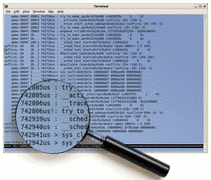Dates and Events:
|
OSADL Articles:
2023-11-12 12:00
Open Source License Obligations Checklists even better nowImport the checklists to other tools, create context diffs and merged lists
2022-07-11 12:00
Call for participation in phase #4 of Open Source OPC UA open62541 support projectLetter of Intent fulfills wish list from recent survey
2022-01-13 12:00
Phase #3 of OSADL project on OPC UA PubSub over TSN successfully completedAnother important milestone on the way to interoperable Open Source real-time Ethernet has been reached
2021-02-09 12:00
Open Source OPC UA PubSub over TSN project phase #3 launchedLetter of Intent with call for participation is now available |
Do you know what a latency fighter is?
Latencies? No, thanks.
Get it
Need a Linux real-time system? No problem. Download the Linux kernel from www.kernel.org, apply the RT-Preempt patches, configure Preemption Mode as Complete Preemption (Real-Time) in the Processor type and features menu and compile your new real-time kernel - that's it. If everything works as expected, you are in business.
Test it
What, however, if the systems does not work as expected and you suspect that the system is not as real-time as it should? Then, the famous latency fighting begins.
Fight it
Fortunately, the RT-Preempt patches already contain a number of trace and debug tools that can be enabled in the Kernel hacking configuration menu. (Remember, however, to disable them when the problem has been solved, since these tools may increase runtime overhead and latencies.) A typical latency fighter would enable Kernel debugging, Debug preemptible kernel, Wakeup latency timing, Latency tracing and Wakeup latency histogram. Latency tracing is then enabled by default, and the current scheduling latency can be inspected via the /proc file system. The procedure is explained in more detail in the updated version of our related HOWTO.
In general, the output of the latency trace contains the information required to remove the source of the increased latency (kernel misconfiguration, driver problem etc.). Sometimes, however, the trace output is not obvious. OSADL has therefore established a special service: Simply send the output of the latency trace along with the kernel configuration and the output of the lspci command to latency-fightersªosadl.org. We are sure you understand that OSADL members will be served first, but we promise to do our best to help everybody to fight against latencies.





